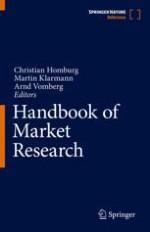Abstract
Time-series data include repeated measures of marketing activities and performance that are typically equally spaced in time. In the context of such data, Vector Autoregressive (VAR) models are uniquely suited to capture the time dependence of both a criterion variable (e.g., sales performance) and predictor variables (e.g., marketing actions, online consumer behavior metrics), as well as how they relate to each other over time. The objective of this chapter is to provide a foundation in VAR models and to enable the readers to apply them in their own research domain of interest. To this end, the chapter will discuss both the underlying perspectives and differences among alternative VAR models, and the practical issues with testing, model choice, estimation, and interpretation that are common in empirical research in marketing.
From a marketing strategy perspective, both managers and academic researchers pay attention to whether a performance change is temporary (short-term) or lasting (long-term). Establishing the distinction between short-term and long-term marketing effectiveness is central to the understanding of marketing strategy and its implications, which this chapter aims to do. The interaction among appropriate marketing phenomena, modeling philosophy, and contemporary substantive topics sets this work apart from previous treatments on the broader topic of econometrics and time-series analysis in marketing (e.g., Dekimpe and Hanssens, Persistence modeling for assessing marketing strategy performance. In: Lehmann D, Moorman C (eds) Cool tools in marketing strategy research. Marketing Science Institute, Cambridge, MA, 2004; Hanssens et al., Market response models: Econometric and time series analysis. Springer Science and Business Media, 2001; Pauwels, Found Trends Market 11(4):215–301, 2018).
